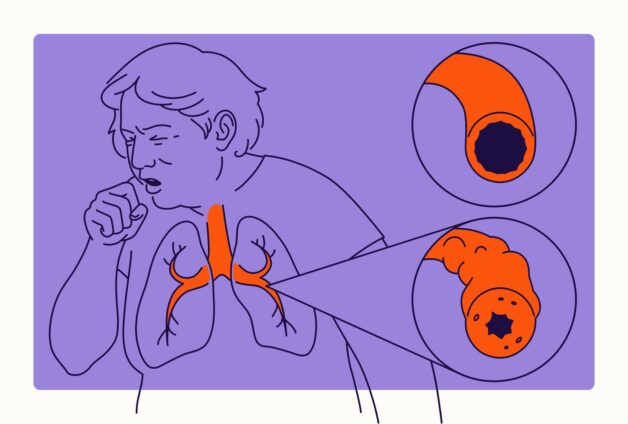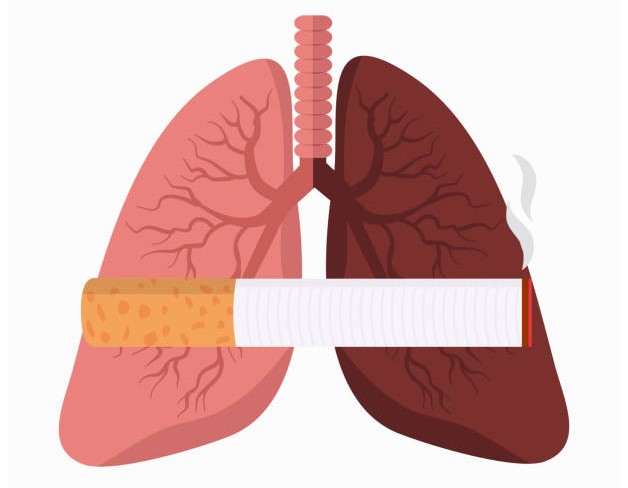Chronic Obstructive Pulmonary Disease (COPD), also sometimes known as chronic bronchitis or emphysema, stands as the third leading cause of global mortality, contributing to 3.23 million deaths in 2019. This article aims to provide essential insights into this condition.
1. General Information about Chronic Obstructive Pulmonary Disease
1.1 What is Chronic Obstructive Pulmonary Disease?
Chronic Obstructive Pulmonary Disease is a chronic inflammatory lung condition resulting in airflow obstruction. Chronic bronchitis and emphysema are the two most common conditions leading to COPD. These conditions may coexist and vary in severity among individuals with COPD.
– Emphysema involves damage to the air sacs in the lungs.
– Chronic bronchitis is characterized by long-term inflammation of the respiratory tract.
COPD is prevalent, primarily affecting middle-aged or older adults who smoke. However, many individuals may not recognize their affliction with this condition. COPD tends to worsen over time, with symptoms escalating in severity and frequency, limiting normal activities.
1.2 Symptoms of Chronic Obstructive Pulmonary Disease
Symptoms of COPD often manifest when significant lung damage occurs, typically worsening over time, especially with continued exposure to cigarette smoke. Distinctive signs and symptoms of COPD include:
– Difficulty breathing, especially during physical activity, requiring increased effort.
– Wheezing.
– Chest tightness.
– Chronic cough producing sputum (phlegm) with colors ranging from clear, white, yellow, or slightly green.
– Frequent respiratory infections.
– Fatigue.
– Unintentional weight loss in later stages of severe symptoms.
– Swelling in the ankles, feet, or legs.

If not controlled and treated, daily symptoms tend to worsen
If not controlled and treated, daily symptoms tend to worsen, and there may be sudden exacerbations known as COPD exacerbations, lasting several days with varying severity each day.
1.3 What Causes COPD?
COPD occurs when the lungs become inflamed, damaged, leading to airflow obstruction. The primary cause is smoking, although non-smokers can also be affected.
– The risk of developing COPD increases with the amount and duration of smoking.
– Some COPD cases result from prolonged exposure to harmful smoke or dust.
– Others are due to a rare genetic condition making the lungs more susceptible to damage.

Quit smoking today to safeguard your health and the well-being of those around you
1.4 Complications of COPD
COPD can lead to complications, including:
– Respiratory infections: COPD patients are more susceptible to colds, flu, and pneumonia, exacerbating breathing difficulties and potentially causing additional lung damage.
– Cardiovascular issues: COPD increases the risk of heart problems, including heart attacks.
– Lung cancer: COPD patients have a higher risk of developing lung cancer.
– High blood pressure in the lung arteries: COPD can lead to increased blood pressure in the arteries carrying blood to the lungs.
– Depression: Difficulty breathing may limit enjoyable activities, contributing to the development of depression.
2. Treatment Options for COPD
Once diagnosed with COPD, the condition has usually existed for some time and cannot be completely cured. Treatment primarily focuses on improving symptoms and maintaining healthy lung function.
The foremost step in any COPD treatment plan is quitting smoking. Avoiding smoke exposure and other pollutants at home and work is also crucial.
Physicians will consider various treatment methods based on the patient’s condition, symptoms, and related health issues:
– Medication therapy.
– Oxygen therapy for long-term or severe COPD cases.
– Pulmonary rehabilitation through exercises to enhance breathing and physical fitness.
– Surgery may improve symptoms in severe cases.
– Prevention and treatment of respiratory infections, with certain vaccines, such as flu and pneumonia vaccines, being especially important for COPD patients.

Treatment primarily focuses on improving symptoms and maintaining healthy lung function
3. Prevention of Chronic Obstructive Pulmonary Disease
Unlike some diseases, COPD often has a clear cause, identifiable prevention methods, and significant potential for risk reduction. Most cases are directly linked to smoking, making the most effective preventive measure to abstain from smoking or quit as early as possible.
If you are a long-term smoker, understanding the severity of smoking’s impact on the lungs is crucial. Attempting to quit or undergoing smoking cessation programs is advisable, with various methods available for support.
For passive smokers, efforts to avoid tobacco smoke as much as possible are essential.
For those in occupations with exposure to smoke and chemical dust, a significant risk factor for COPD, wearing appropriate respiratory protective equipment as per job requirements is crucial.
Regular health check-ups are vital for everyone. Proactively schedule health check-ups, including respiratory system assessments every 6 months to 1 year.








